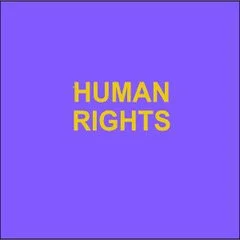By Maricela Sanchez
In 2023, we worked with local partners and a brave set of detained leaders to create the California Immigration Detention Database (“Database”). The purpose of the Database was to expose and document the daily conditions of life in California immigration detention by tracking formal grievances sent to us by those inside. “When people try to be heard by staff through their grievances, [they] are ignored. These facilities are not safe, and staff are not held responsible for misconduct.” – Jose Ruben Hernandez Gomez Since the inception of this project, detained immigrants in California have launched widespread labor strikes and hunger strikes and have filed multiple lawsuits and administrative complaints to put a spotlight on the abuse and neglect they suffer. As part of this effort, people in custody have continued to send us copies of the grievances they file through Immigration and Customs Enforcement’s (“ICE’s”) internal system. As of July 2024, we have received 485 grievances across six immigration detention facilities in California. Together, these grievances reveal a persistent and disturbing pattern of abuse that pervades ICE’s detention regime in California. • Hazardous Facilities and Inhumane Treatment: Inadequate facility management was the most common reason for a grievance, making clear that ICE’s immigration detention facilities in California are consistently unfit for human habitation. ICE also fails to meet the minimum standards of its own policies, like ensuring people have edible food, clean water, and the opportunity to go outside for fresh air and sunshine • Medical neglect: We have received 94 grievances related to inadequate medical care, lack of COVID-19 protections, and denial of medication. Many people in the detention facilities suffer from chronic conditions. Some develop new health problems, sometimes because of hazardous materials or abusive treatment they experience while detained. But requests to see a doctor are left languishing, and ICE and facility staff regularly leave medication unfilled, or otherwise disregard the prescribed treatment. Likewise, during the pandemic, ICE showed a remarkable indifference to the safety of the people it incarcerates. More recently, ICE has withheld potentially life saving treatments, like Paxlovid, from people who contract COVID. • Retaliation: The most common outcome of filing a grievance isn’t change. It’s retaliation. The grievances we’ve received include 56 complaints of bullying and harassment by detention facility staff, 13 complaints related to sexual assault, 15 complaints related to sleep deprivation, and 59 complaints related to other forms of retaliation, such as punitive and extended use of solitary confinement. As part of its regular practice, ICE does not proactively release information about the grievances it receives from people in detention. Based on our conversations with detained people and with local partners who regularly engage in detention-related work, we believe that our records represent the most consistent issues in the detention facilities. This report is intended to support the advocacy and resistance of the people trapped inside ICE’s detention facilities. It includes data, stories, and background that document the ongoing harms of immigration detention. Taken together, it is unequivocally clear that ICE and the private companies it contracts with cannot be trusted to care for the people they detain. The grievance system, which is supposed to offer an avenue for redress, ends up making things worse for those it’s intended to help. Existing oversight mechanisms are inadequate, and human rights violations are rampant. It is our conclusion that the immigration detention system is irredeemable and infected by greed, racism, and impunity
San Francisco: UCLA of Northern California, 2024. 34p.




